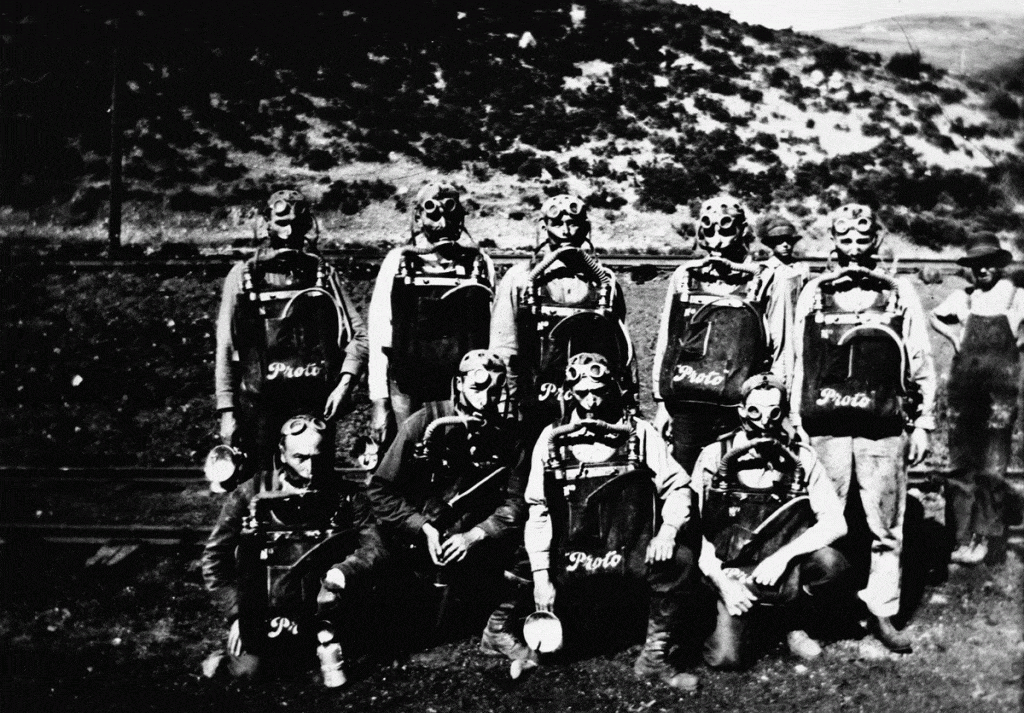The United States Bureau of Mines was founded in 1910, partly as a response to a rash of mining disasters throughout the country in the immediately preceding years. December 1907 alone saw three major disasters in just three weeks, resulting in the deaths of over 600 miners, mostly in the mining districts of Pennsylvania and West Virginia. The primary purpose of the Bureau was to monitor mine safety and train rescue and response teams.
As a mining community, Park City benefitted from the Bureau. While some opposition noted the fear that an increased government role in the mining industry might threaten local and state duties, most were supportive. The Bureau organized engineers, scientists, public health officials, and miners to conduct research in the fields of safety, health, and environmental impact analysis.
For both educational purposes and to serve as disaster response teams, the Bureau organized “rescue cars” housed in remodeled Pullmans that traveled the country. When visiting mining communities, Bureau personnel would host workshops, lectures, and drills to train local miners and mine owners in disaster preparedness. One of these cars visited Park City for the first time in 1911 and continued to do so periodically over the next several years.

Credit: Park City Historical Society and Museum, Bea Kummer Collection
The workshops here in town were successful. By 1920, local miners regularly held their own workshops and drills. In September of that year, the Ontario Mine Rescue Team represented Park City at the international mine rescue and first aid contests in Denver. Understanding that insufficient disaster response often contributed to increased death tolls, safety campaigns were regularly promoted locally and throughout mining communities in Utah.
This training came to the rescue in April 1941. Over the course of seven days, blasting powder gas had accumulated in a winze in the old Daly West section of the Judge unit at the Park Utah Consolidated Mines company. The pocket of “dead air” was discovered when miner Edmund Walker failed to return from a trip down the winze. Ted Johnson took a carbide lamp and set down the ladder to find his colleague, but recognized danger when his lamp extinguished and he felt himself get lightheaded. He ascended the ladder to sound an alarm, notifying Glen Lockhart and Wallace Perry, who were working nearby, and called for assistance.
A safety crew of fifteen men rushed to the scene. They were properly equipped with breathing apparatus and masks as well as electric lights. Lockhart and Perry, who had failed to wait for the team and instead tried to rescue Walker themselves, were recovered, dead, along with Walker’s body when the rescue crew arrived.
State Mine Inspector C.W. Spence noted that, despite the loss of Lockhart and Perry, “had it not been for the training received by the mine’s rescue crew…the bodies could not have been recovered without further loss of life among rescue workers.” Preparedness had paid off and a much larger disaster was averted.